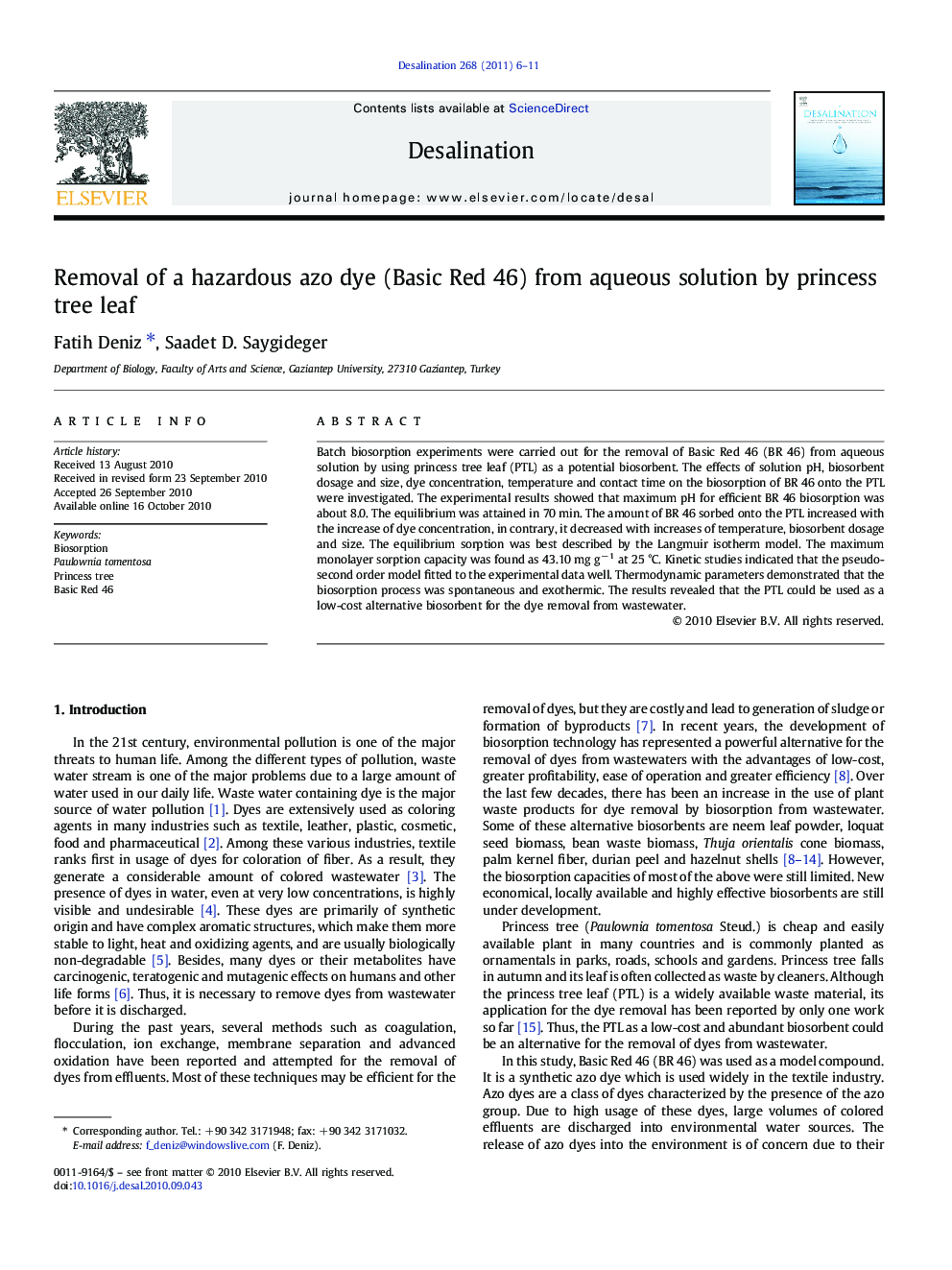| Article ID | Journal | Published Year | Pages | File Type |
|---|---|---|---|---|
| 625458 | Desalination | 2011 | 6 Pages |
Batch biosorption experiments were carried out for the removal of Basic Red 46 (BR 46) from aqueous solution by using princess tree leaf (PTL) as a potential biosorbent. The effects of solution pH, biosorbent dosage and size, dye concentration, temperature and contact time on the biosorption of BR 46 onto the PTL were investigated. The experimental results showed that maximum pH for efficient BR 46 biosorption was about 8.0. The equilibrium was attained in 70 min. The amount of BR 46 sorbed onto the PTL increased with the increase of dye concentration, in contrary, it decreased with increases of temperature, biosorbent dosage and size. The equilibrium sorption was best described by the Langmuir isotherm model. The maximum monolayer sorption capacity was found as 43.10 mg g− 1 at 25 °C. Kinetic studies indicated that the pseudo-second order model fitted to the experimental data well. Thermodynamic parameters demonstrated that the biosorption process was spontaneous and exothermic. The results revealed that the PTL could be used as a low-cost alternative biosorbent for the dye removal from wastewater.
Research Highlights►The biosorption pattern of BR 46 onto the PTL was well fitted with the Langmuir isotherm model. ►The pseudo-second order model expressed the biosorption kinetic well. ►The biosorption was a typical physical process, spontaneous and exothermic in nature. ►The PTL could be used as an economical natural biosorbent to remove BR 46 dye from aqueous solution.
